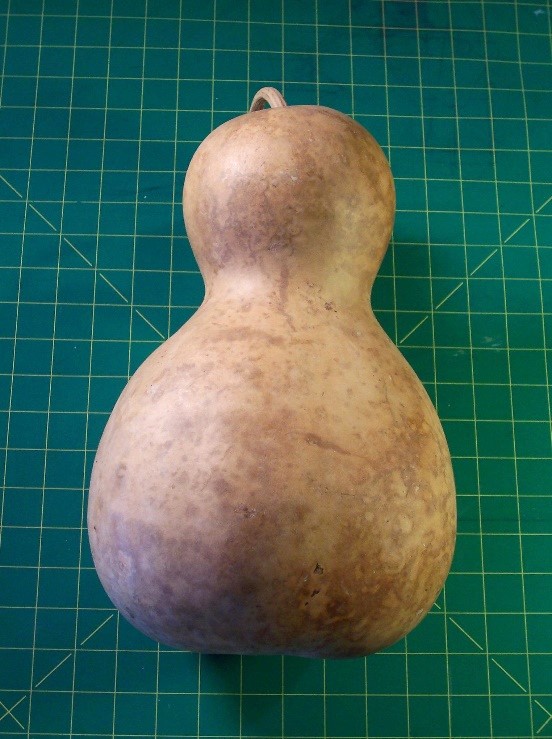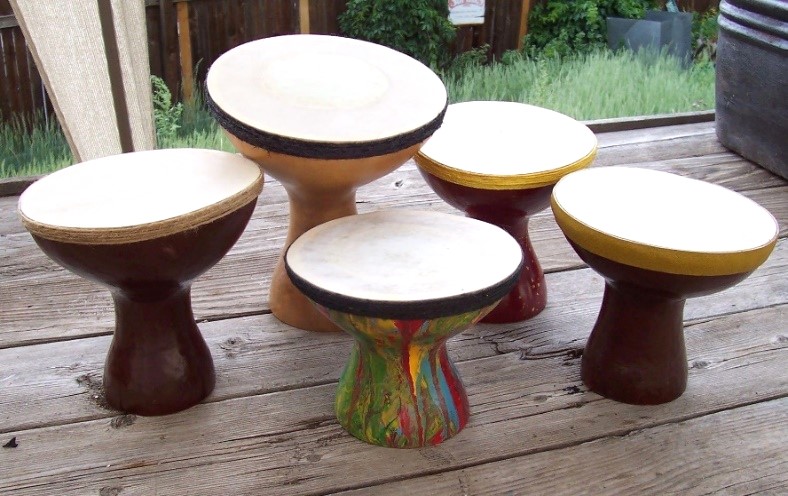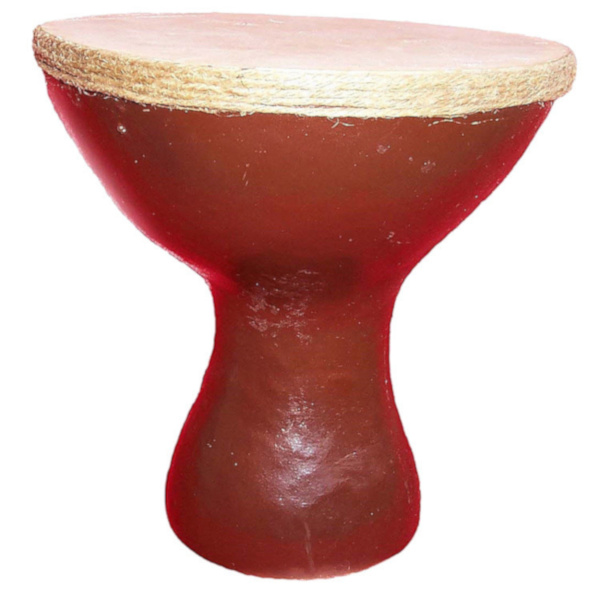
Basic Hand Drums are typical entry-level instruments in the craft of gourd percussion instrument making. They are frequently constructed using a calabash (a.k.a “bottle gourd”). A calabash, Lagenaria siceraria, is a member of the Cucurbitaceae, or gourd family, to which cucumber, zucchini, a variety of melons, the venerable pumpkin, and many other plants that look like squash all belong.
Basic hand drums are classified as a membranophones – the class of musical instruments whose sound is generated by striking, rubbing, or singing into a stretched membrane. When engineering a gourd drum, any instrument with a membrane stretched over its surface to generate sound is a membranophone. Constructing a membranophone really only requires three things: a frame to secure a membrane to, a membrane, and some method of attaching the membrane to the frame. One of the interesting things about building an instrument from a gourd is that the frame is made from the dried fruit of a Cucurbitaceae. Given the right environment, you could potentially grow a gourd for a drum frame in your own backyard (gourds are tropical plants, but are in wide cultivation all over the world wherever there is a growing season long enough for them to achieve maturity).
When a gourd frame is skinned with a suitable membrane (drumhead), stretched to the appropriate tension, the tones a player is able to produce using a Basic Hand Drum are similar to those of a djembe. A base tone is played by striking the the membrane near its center with an open hand. An open tone is played by striking the membrane along its edge (rim) with a flat hand. A slap tone is (similar to an open tone) can also be played by striking the membrane along the rim with a relaxed hand. And a closed tone is played by muting a strike along the rim, by maintaining contact with the playing hand on the rim after the strike (strike without release).

Gourd drums are usually skinned using the thick, dermis layer of animal hide because the proteins in the dermis (largely composed of callogen2) are quite elastic and stretch easily over a gourd’s rim. Additionally, the elasticity of animal skin increases when wet, but becomes more turgid when dry, increasing its tautness during the drying process when secured to a rigid frame. Vegan options, such as Mylar®(DuPont’s Teijin Films’ name for their brand of polyethylene terephthalate (PET) polymer)3 exist, but typically don’t have enough elasticity to stretch over the rim to be secured directly to the gourd frame. In such cases, a different method of securing the drumhead to the frame is required, like constructing an auxiliary rim (see Verbose Talking Drum).
Anyone interested in developing experimental gourd drums should become quite comfortable building Basic Hand Drums. A collection of them are shown in Figure 3.

References:
- Bliss, Don (artist). “Anatomy [of] The Skin – NCI Visuals Online.” Public domain, via Wikimedia Commons. 17 June 2021. https://commons.wikimedia.org/wiki/File:Anatomy_The_Skin_-_NCI_Visuals_Online.jpg. Accessed 1 July 2021.
- Britannica, The Editors of Encyclopaedia. “Collagen”. Encyclopedia Britannica. https://www.britannica.com/science/collagen. Accessed 1 July 2021.
- Mylar®. DuPont Teijin Films. https://usa.dupontteijinfilms.com/resources/trademark/. Accessed 1 July 2021.
